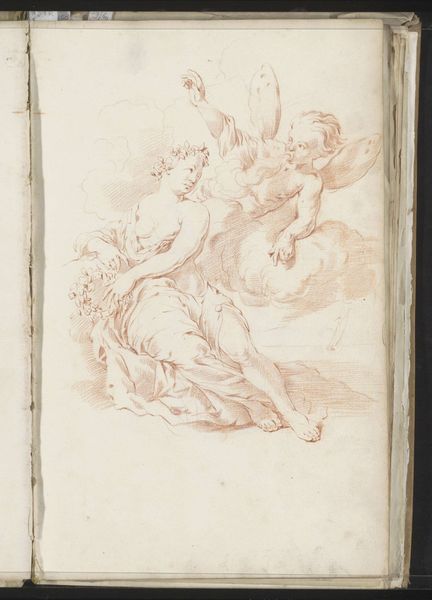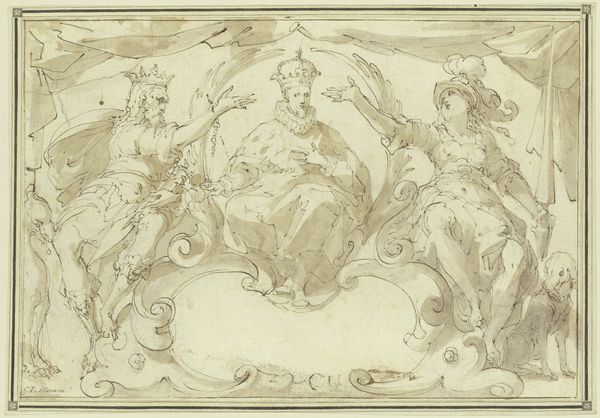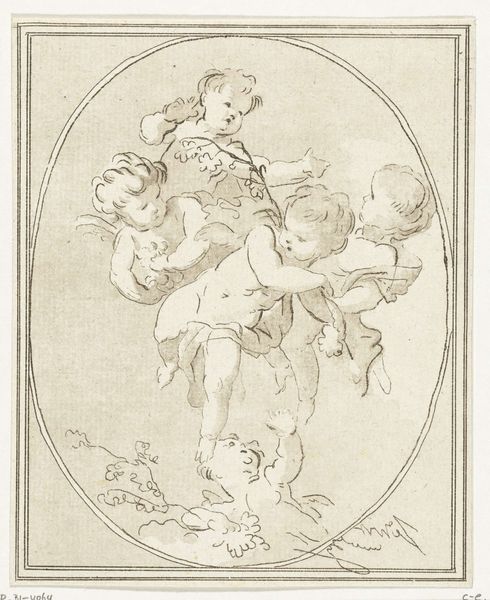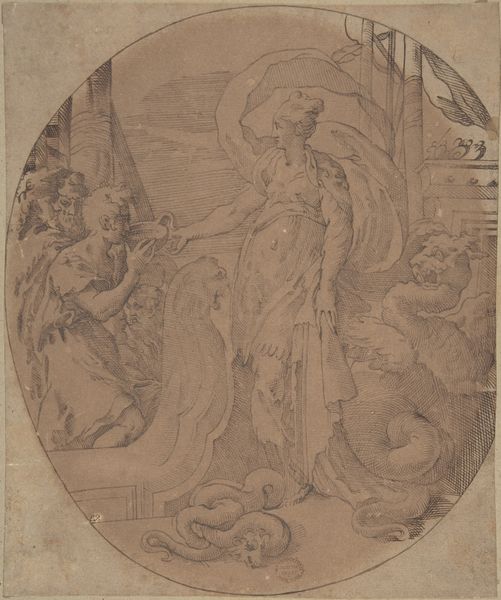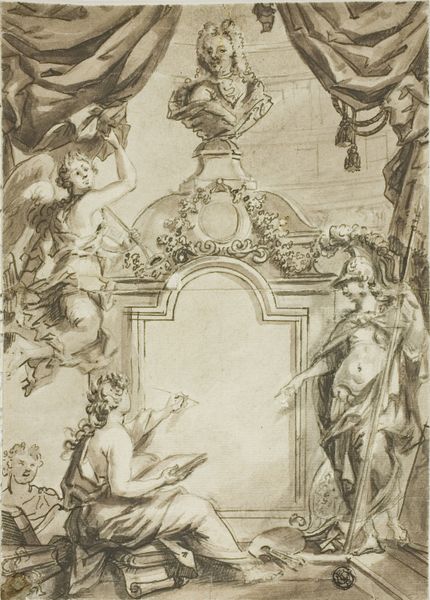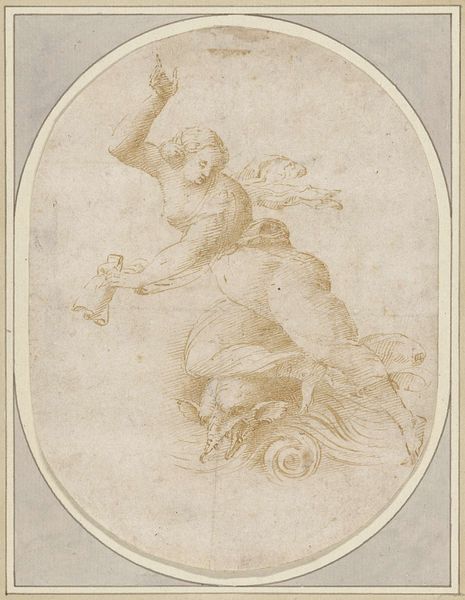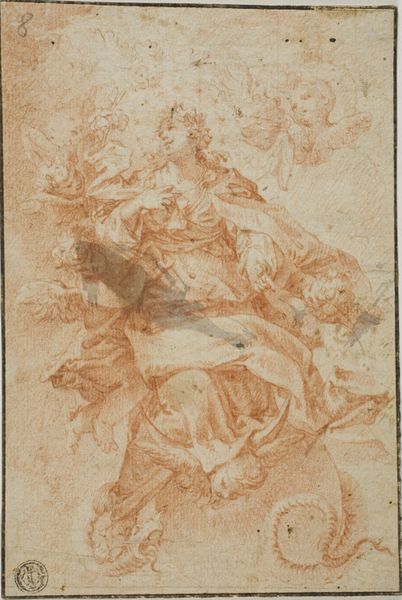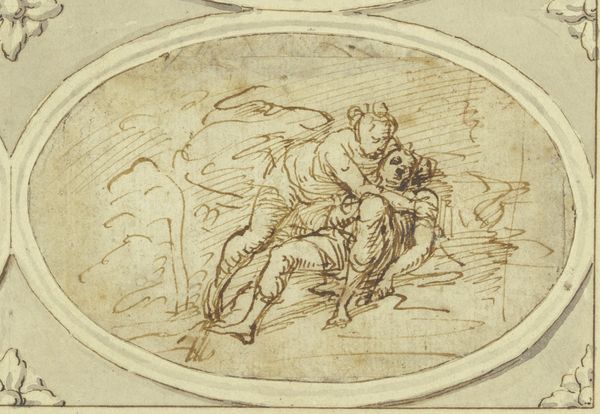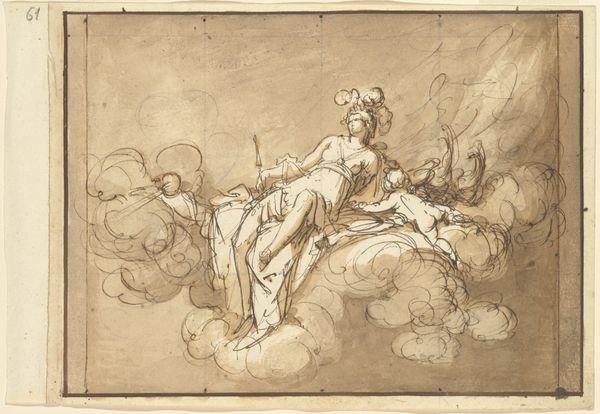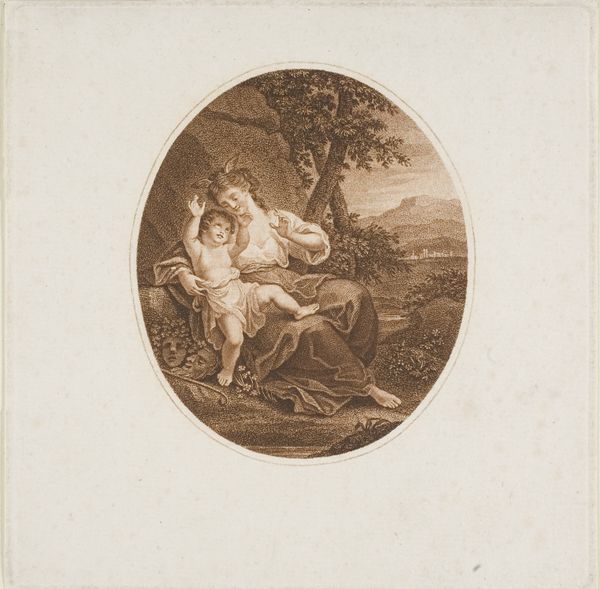
drawing, ink, pen
#
drawing
#
allegory
#
figuration
#
ink
#
pen
#
watercolor
#
rococo
Dimensions: height 226 mm, width 223 mm
Copyright: Rijks Museum: Open Domain
Curator: Jacob de Wit created this ink and pen drawing titled "Allegorical Female Figure with Two Putti above a Rocaille Cartouche" in 1731. Editor: It has an airy, almost unfinished quality. The monochromatic palette and the fluid lines really evoke a sense of graceful movement despite the allegorical weight. Curator: De Wit, deeply engaged with the Rococo style, utilized these allegorical figures often in ceiling paintings for wealthy Dutch patrons. This drawing would have likely served as a preliminary sketch, reflecting a system where labor was divided to maximize decorative impact. Editor: This Rococo aesthetic, characterized by lightness, elegance, and asymmetry, speaks to a specific socio-political climate. The cartouche, usually holding an inscription, remains empty here, almost mocking the traditional structures of power by embracing open possibilities for its owner. Curator: Right. Consider the drawing's materials. The combination of ink and pen—readily accessible—allowed for both detailed precision and quick notation, showing the practicality of the artist's process within a bustling workshop environment that served specific desires from elite circles. Editor: The female figure herself also feels deeply connected to its period. Representing maybe abundance or fortune, it fits into a system of idealized femininity serving political statements, almost turning this figure and the putti into luxurious goods in service of capital. How do we break away from merely admiring that past system? Curator: Perhaps understanding it from this vantage point is a first step. The seemingly spontaneous strokes were intentional economic moves within an art market that encouraged efficiency in production and that required knowledge and access to a specialized set of tools and knowledge. Editor: True. I walk away from this thinking about labor—the artist's skill—but also, what this allegory papers over in terms of the wider imbalances it sought to naturalize. Curator: Ultimately, I appreciate de Wit’s draftsmanship in creating this ephemeral vision through tangible and pragmatic methods of the time.
Comments
No comments
Be the first to comment and join the conversation on the ultimate creative platform.
